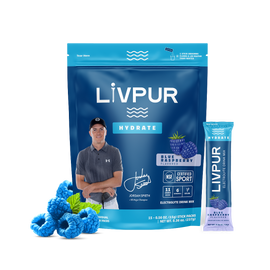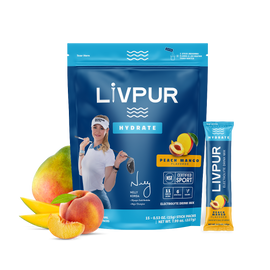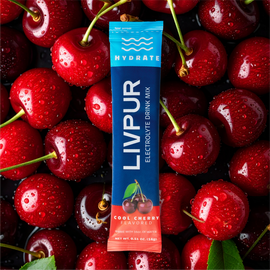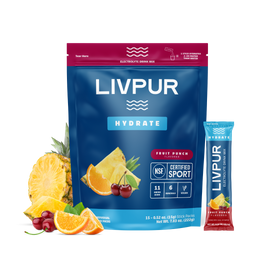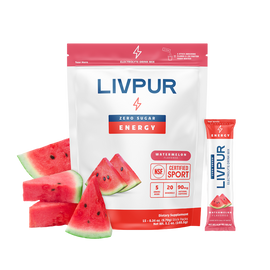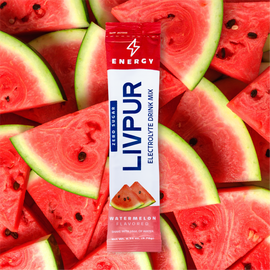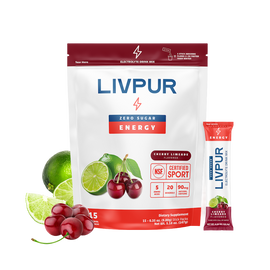May 23, 2022 • By Troy Van Biezen • Blog
Improve Your Golf Game With Zach Johnson’s Full-Body Strength and Mobility Workout

At 41 years old, Zach Johnson isn’t concerned about driving the ball farther than the young guns on the PGA Tour. With 26 pro wins, he’s perfectly fine relying on his accurate shots off the tee and a short game that’s among the best in the world. Instead, the keys for Johnson are to simply stay healthy and perform at the level to which he’s accustomed.
If you play or follow golf, you know that swinging a club at over 100 mph is an incredibly explosive movement. Everything from your ankles to your shoulders needs to be working properly, or else you’re susceptible to injury—you need to look no further than Rory McIlroy and Tiger Woods for examples of high-profile golf injuries.
“If you look at Zach and that age group, the No. 1 thing is making sure that flexibility and mobility stay efficient,” explains Dr. Troy Van Biezen, pro golf trainer and chiropractor who works with Johnson, Jordan Spieth and Rickie Fowler. “My younger guys, you want to make sure they get their strength gains. And then the older guys, you need to make sure they are really flexible.”
Yes, strength is important—Van Biezen has focused on developing Johnson’s legs and glutes over the past few years—but flexibility and mobility are what allow Johnson’s body to move fluidly during his swing. Tight hips could put stress on his lower back. The same can be said for his thoracic spine, or middle to upper back.
“I think the three body parts you want to look at are the hips, the thoracic spine, or mid back, and the shoulders … make sure they’re moving,” adds Van Biezen. “If not, the lower back takes the hit, and we want to avoid that.”
To maintain these abilities, Van Biezen has Johnson perform workouts that include movements that are similar to a golf swing, such as Cable Rotational Chops. This strategy adds strength, teaches his core to lock down and protect his spine when rotating, and enhances mobility in the areas critical to a golf swing.
Zack Johnson's Workout
We had an opportunity to check out Johnson’s workout with Van Biezen in the Player Performance Center, a traveling fitness center housed in two large trailers that PGA Tour players can use to work out and tend to their bodies during tournaments, before the 2017 Bridgestone Classic at Firestone Country Club in Akron, Ohio.

- Benefits: This develops the lower traps, which are important muscles for maintaining healthy shoulders.
- How to: Assume an all-fours position with a resistance band looped around your feet and grasp the handles with both hands. With your palm facing in and arm straight, raise your left arm next to your head. Slowly lower and repeat.
- Sets/Reps: 2-3 10 each side
 1B) Rotational Cable Chops
1B) Rotational Cable Chops
- Benefits: Improves rotational power and core stability.
- How to: Stand with your feet shoulder-width apart and slightly bend your hips and knees. Hold the cable handle with both hands in front of your stomach. Keeping your core tight, drive through your right hip and explosively pull the cable to the left by rotating through your upper back and shoulders. Return to center in control and repeat for the specified number of reps. Once you finish, do 10 Pallof Presses by bringing the cable handle to your stomach and pressing it out again.
- Sets/Reps: 2-3×10+10 each direction
 2A) ¼ Turkish Get-Ups
2A) ¼ Turkish Get-Ups
- Benefits: One of the best exercises for developing total core strength and stability.
- How to: Lie on your back with a dumbbell or kettlebell in your right hand, your right knee bent and your knee pointed to the ceiling. Your left leg should be angled out away from your body slightly, with the heel driven into the floor and a slight bend in the knee. Keep your left arm flat on the ground by your side, pointed out away from your body at approximately the same angle as your left leg. Keeping your eyes on the hand with the kettlebell, start the motion by rolling up to your left forearm, using your elbow as a pivot. Continue until you are resting completely on your left forearm.
- Sets/Reps: 2-3×5 each side
 2B) Split Squat Cable Chops
2B) Split Squat Cable Chops
- Benefits: This is a more difficult position than the previous cable chop exercise, challenging your core from a different angle and adding a balance component.
- How to: Assume a split stance with your left leg forward and hold the cable handle with both hands in front of your shoulders. Keeping your core tight, lower into a lunge position until your left thigh is parallel to the ground. As you lower into the Lunge, rotate your arms toward your left hip. Drive out of the Lunge pull your arms back to center in the starting position.
- Sets/Reps: 2-3×10 each side
 3A) Band T Rotations
3A) Band T Rotations
- Benefits: Improves t-spine mobility while also building glute strength.
- How to: Wrap a mini-band around your ankles and hold a resistance band with both hands, and position your arms to your sides to form a T shape with your body. Stand with your feet hip-width apart and slightly bend your knees and hips. Take a step back and to the side with your right foot. Keeping your core tight, rotate your arms to the right as far as you can without arching your lower back. Rotate and step back to center to return to the starting position.
- Sets/Reps: 2-3×10 each side
 3B) Single-Leg Cable Crossbody Chops
3B) Single-Leg Cable Crossbody Chops
- Benefits: This is the most challenging of the three cable chop exercises. The single-leg stance develops hip stability, balance and core strength.
- How to: Stand on your right leg and bring your left thigh to parallel. Hold a rope attachment with both hands at your right hip. Keeping your core tight, pull the rope attachment up and across your body to the left of your head. Slowly return it to the starting position.
- Sets/Reps: 2-3×10 each side
 4A) Side Plank Leg Raise With DB Hold
4A) Side Plank Leg Raise With DB Hold
- Benefits: Builds glute, core and shoulder strength at the same time.
- How to: Assume a side plank position with your right elbow on the ground and your right knee bent. Hold a lightweight dumbbell with your left hand over your shoulder. Simultaneously drive your hips up and raise your left leg. Lower to the ground and repeat.
- Sets/Reps: 2-3×10 each side
 4B) Band Push-Pull
4B) Band Push-Pull
- Benefits: Although this exercise looks like you’re developing chest, back and leg strength, the key here is to maintain a strong core during these dynamic movements.
- How to: Assume a lunge position with your right leg forward and thigh parallel to the ground. Hold the band in front of you with your right arm extended and hold the band behind you with your left arm at your chest. Drive up out of the lunge and simultaneously perform a row with your right arm and a press with your left arm. Lower back into the Lunge and return your arms to the starting position.
